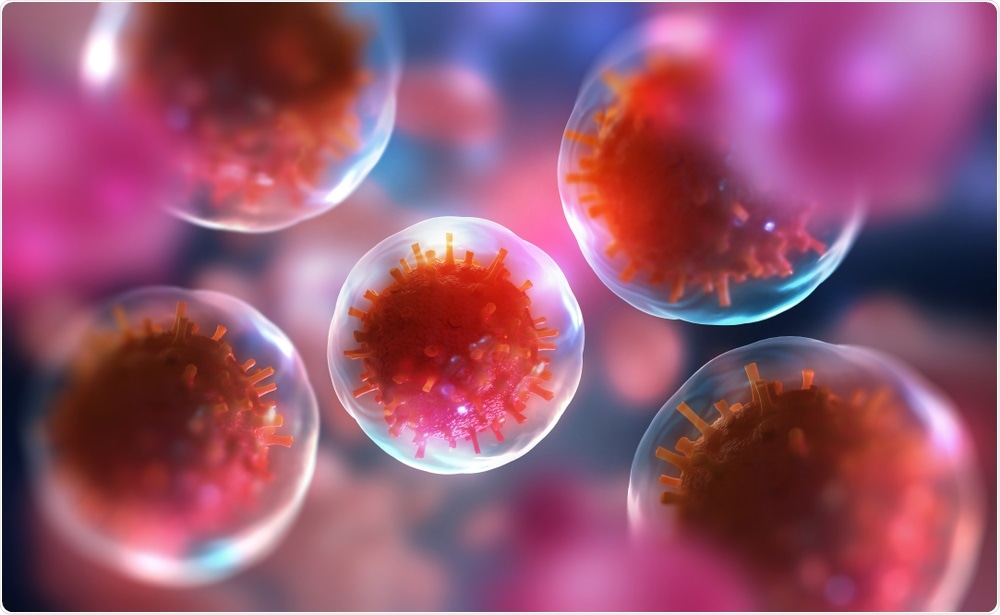A new light technique has been developed by a team of researchers at the University of York in the UK that can reveal how cells communicate in disease scenarios.

Image Credit: Yurchanka Siarhei/Shutterstock.com
In a paper published in the journal Proceedings of the National Academy of Sciences, the team describes how they established this groundbreaking method that they aim to be used in clinical settings to facilitate the early diagnosis of diseases, as well as improve drug development so that therapies have fewer adverse side effects.
The disease often begins with a mutation in a single cell
Communication between all cells in the human body is essential to for vital processes to take places, such as enabling the immune system to become activated and respond to invading molecules, governing cell division and preventing mutations, such as those that are the hallmark of cancer, as well as supporting the normal functioning of the body’s tissues and organs.
To allow this communication to take place the body’s cells release signaling molecules, a process that is difficult to observe in great detail.
Up until now, scientists wanting to investigate the communication happening between cells have had to observe the activity of thousands or millions of cells to decode the conversation happening between masses of cells.
While this has been invaluable in determining how the body’s cells and tissues are connected, as well as in elucidating the various pathways that underly specific physical and psychological activities, it is limited in that it does not allow scientists to detect defects.
To do this, scientists would need to measure the communications occurring at the level of the individual cell. In doing this, scientists would be able to see where errors are occurring, allowing them to not only better understand the processes involved in the initiation of disease, but also develop new methods of early diagnosis and facilitate personalized treatment plans.
Given that numerous diseases begin with just a single mutation in an individual cell, the development of a method for detecting malfunctions in individual cells would be crucial to progressing the treatment of these diseases.
However, the team at York recognized that current tests are unable to report on communication at this level.
Therefore, the team of scientists at York University aimed to develop a method that would allow researchers to view these activities at the level of the individual cell. The planned to develop a light-based technology that would be able to measure the activity occurring in individual cells simultaneously.
Developing a new technique to view cells in unprecedented detail
The team developed a sensor device that uses light to read the signals produced by cells. The device forces light to move in an oscillating motion, moving backward and forward over the sensor’s surface.
This movement enables the sensor to pick up on signaling molecules that are secreted by individual cells and quantify them. With this device, the researchers demonstrated that they were able to observe a single cell’s behavior over time.
Cancer is a disease that often begins with abnormal changes within a single cell. With the establishment of this new device, scientists will be able to detect the onset of cancer at earlier stages, which will improve treatment outcomes. Other medical conditions, such as blood clots, for example, will also benefit from early detection, which will hopefully have the outcome of improving survival rates.
Many questions surrounding the changes that occur within single cells that are influential to disease will be able to be answered with this new technique. Observing these mutations will allow scientists to eventually develop methods to prevent these errors occurring, effectively preventing disease.
Future diagnostic and therapeutic potential
Researchers have shown that the new method can be successfully used on live human cells. Now, the team is working on developing the technique for use in clinical applications.
The findings of this study are considered a significant step toward regulating and preventing human disease. The next step will be exploring how the method can be adapted to block the cellular communication that protects them from the toxicity of therapeutic methods. Testing the technique on cancerous cells will also be attempted in the near future.
Gaining a better understanding of the communication that occurs between cancer cells and other healthy cells in the body will be vital in unraveling the secrets of cancer recurrence.
Currently, the method is still in its early stages, however, it is hoped that in the future the technique will be able to diagnose cancer in its early stages and help to develop more personalized treatment plans, effectively increasing cancer survival rates.
Sources:
New light-based technology reveals how cells communicate in human disease. Available at: https://www.sciencedaily.com/releases/2018/12/181211103111.htm
The new technique allows scientists to 'listen in' on cancer cells. Available at: https://www.eurekalert.org/pub_releases/2020-02/cru-nta021420.php
Journal reference:
Juan-Colás, J., Hitchcock, I., Coles, M., Johnson, S. and Krauss, T. (2018). Quantifying single-cell secretion in real-time using resonant hyperspectral imaging. Proceedings of the National Academy of Sciences, 115(52), pp.13204-13209. https://www.pnas.org/doi/10.1073/pnas.1814977115